“Inventing the Abbotts” (1997)

Inventing the Abbotts (1997): A Comprehensive Guide to a Nostalgic Coming-of-Age Drama
Released on April 4, 1997, Inventing the Abbotts is a period coming-of-age drama that captures the tangled emotions of youth, class divides, and forbidden love in 1950s small-town America. Directed by Pat O’Connor and based on a short story by Sue Miller, the film boasts a stellar ensemble cast of young talent—Joaquin Phoenix, Billy Crudup, Liv Tyler, Jennifer Connelly, and Joanna Going—alongside seasoned actors like Will Patton and Kathy Baker. Set in the fictional town of Haley, Illinois, this lushly nostalgic film explores the intersecting lives of two families: the working-class Holts and the wealthy Abbotts. While it didn’t achieve blockbuster status or critical acclaim at the time, Inventing the Abbotts has endured as a cult favorite for its heartfelt performances, evocative period setting, and poignant exploration of love, envy, and redemption. This article provides a comprehensive overview of the film, diving into its plot, themes, cast, production, reception, and lasting legacy.
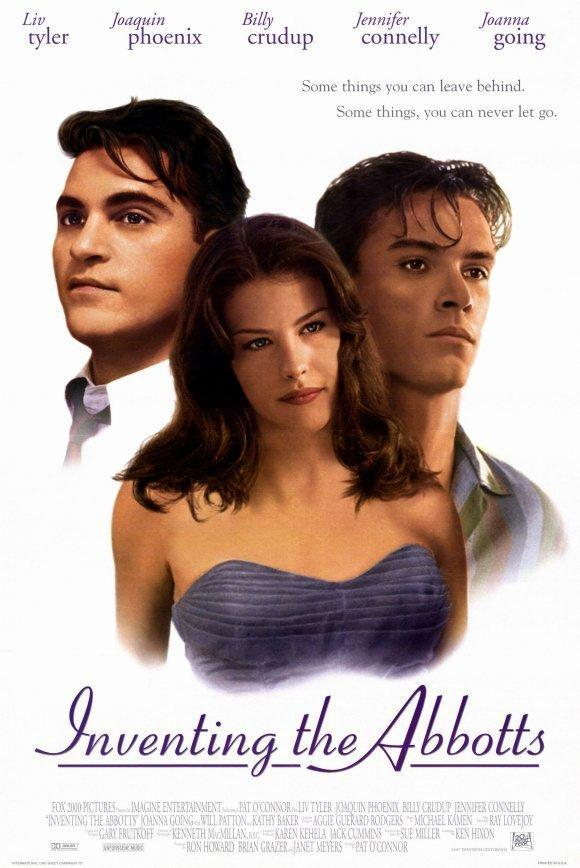
Plot Summary
Inventing the Abbotts unfolds in the late 1950s in Haley, Illinois, a seemingly idyllic Midwestern town where social class defines relationships and opportunities. The story centers on two brothers, Jacey Holt (Billy Crudup) and Doug Holt (Joaquin Phoenix), who come from a working-class family raised by their widowed mother, Helen (Kathy Baker). Their father, Charlie Holt, died years earlier in a reckless accident—a bet with Lloyd Abbott (Will Patton) that led him to drive his car onto a frozen lake. This tragedy is compounded by rumors that Lloyd, now one of Haley’s wealthiest citizens, cheated Charlie out of a valuable patent for a steel file drawer, fueling the Holts’ resentment toward the affluent Abbott family.
The Abbotts—Lloyd, his wife, and their three beautiful daughters, Alice (Joanna Going), Eleanor (Jennifer Connelly), and Pamela (Liv Tyler)—represent everything the Holts lack: wealth, status, and social prestige. Jacey, the older, charismatic brother, is consumed by envy and a desire for revenge against Lloyd, whom he blames for his family’s financial struggles. He channels this obsession into seducing the Abbott sisters, starting with the wild and *** Eleanor. Their affair leads to scandal, and Eleanor is sent to a mental hospital, never to return to Haley. Jacey then turns his attention to Alice, the eldest sister, who is trapped in an unhappy marriage. Meanwhile, Doug, the younger, more sensitive brother, develops genuine feelings for Pamela, the youngest Abbott daughter, who reciprocates but faces disapproval from both Jacey and Lloyd.
As the brothers navigate their romantic entanglements, the film delves into their contrasting approaches to life. Jacey’s calculated pursuit of the Abbott sisters is driven by a need to prove himself, while Doug’s earnest love for Pamela offers a path to redemption. The narrative, narrated by an older Doug (voiced by an uncredited Michael Keaton), spans several years, from high school to college, culminating in the brothers’ return to Haley for their mother’s funeral. There, they uncover the truth about their father’s patent, revealing that Charlie willingly sold it to Lloyd, dispelling Jacey’s vendetta. In the end, Doug and Pamela’s love prevails, leading to their marriage and the birth of two daughters, while Jacey’s destructive path leaves him unfulfilled.
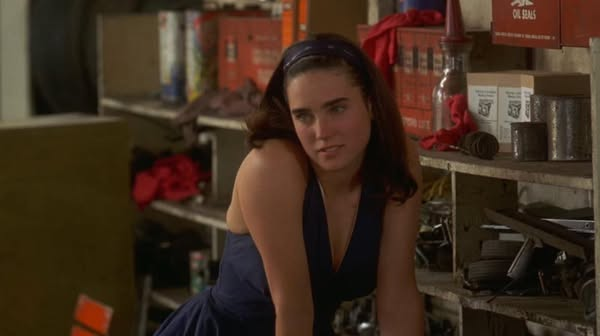
Themes and Analysis
Inventing the Abbotts is a rich tapestry of themes that resonate with the coming-of-age genre, set against the backdrop of 1950s social conformity. The film explores:
- Class Divide and Envy: The central conflict revolves around the socioeconomic gap between the Holts and the Abbotts. Jacey’s obsession with the Abbotts reflects a deep-seated resentment of their wealth, which he perceives as stolen from his family. This class tension mirrors classic American narratives like The Great Gatsby, where social mobility is both a dream and a source of frustration. The film critiques the rigidity of 1950s class structures, where wealth dictates opportunity and relationships.
- Love and Obsession: The romantic entanglements in the film range from genuine affection to manipulative desire. Jacey’s pursuit of the Abbott sisters is less about love than power, as he seeks to “conquer” their privilege. In contrast, Doug and Pamela’s relationship is portrayed as authentic and enduring, offering a counterpoint to Jacey’s destructive behavior. The film examines how love can be both a source of connection and a battleground for personal insecurities.
- Family and Legacy: The Holt brothers’ lives are shaped by their father’s death and the rumors surrounding their mother’s relationship with Lloyd Abbott. The film explores how family history influences identity, with Jacey unable to escape the shadow of his father’s perceived failures, while Doug seeks to forge his own path. The revelation about the patent serves as a moment of closure, allowing the brothers to confront their past and move forward.
- Coming-of-Age Struggles: Set in a time of conformity, the film captures the universal aches of adolescence—first love, sexual awakening, and the search for identity. Doug’s journey, in particular, reflects the confusion and vulnerability of youth, while the Abbott sisters navigate societal expectations as women in the 1950s.
Critics have noted the film’s resemblance to 1950s melodramas like Peyton Place or Splendor in the Grass, with its lush visuals and emotionally charged storytelling. However, some argue it lacks the intensity of those classics, with a script that feels padded from Sue Miller’s concise short story. Roger Ebert likened it to a “time machine” film, evoking the style and values of 1950s cinema but falling short in energy and urgency.
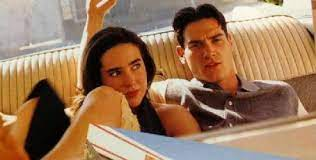
Cast and Characters
The film’s ensemble cast is a highlight, featuring young actors who would later become major stars:
- Joaquin Phoenix as Doug Holt: The younger Holt brother, Doug is shy, sensitive, and searching for his place in the world. Phoenix delivers a nuanced performance, capturing Doug’s awkwardness and sincerity, foreshadowing his later acclaimed roles in Gladiator and Walk the Line. His narration (voiced by Michael Keaton) adds a reflective layer to the story.
- Billy Crudup as Jacey Holt: Jacey is the charismatic, rebellious older brother driven by envy and ambition. Crudup’s smoldering intensity makes Jacey both compelling and tragic, as his pursuit of the Abbott sisters reveals his inner turmoil.
- Liv Tyler as Pamela Abbott: The youngest Abbott sister, Pamela is caught between her family’s expectations and her feelings for Doug. Tyler’s reserved yet heartfelt performance embodies the innocence and quiet strength of a young woman navigating love and societal pressure.
- Jennifer Connelly as Eleanor Abbott: The “bad” sister, Eleanor is bold, ***, and magnetic. Connelly’s alluring performance makes Eleanor a standout, though her character’s early exit leaves audiences wanting more.
- Joanna Going as Alice Abbott: The eldest sister, Alice is the “good” daughter whose conventional life unravels. Going’s understated performance conveys Alice’s vulnerability and quiet rebellion.
- Will Patton as Lloyd Abbott: The patriarch of the Abbott family, Lloyd is a stern, controlling figure whose wealth comes with moral ambiguity. Patton’s performance adds depth to a character who could easily have been a one-dimensional villain.
- Kathy Baker as Helen Holt: The Holts’ widowed mother, Helen is a resilient yet weary figure haunted by her husband’s death and town rumors. Baker’s poignant performance grounds the family’s struggles.
Supporting roles include Alessandro Nivola, Shawn Hatosy, and Michael Sutton, with Michael Keaton providing the uncredited narration. The cast’s chemistry and authenticity elevate the film, with critics praising their ability to portray complex, flawed characters.
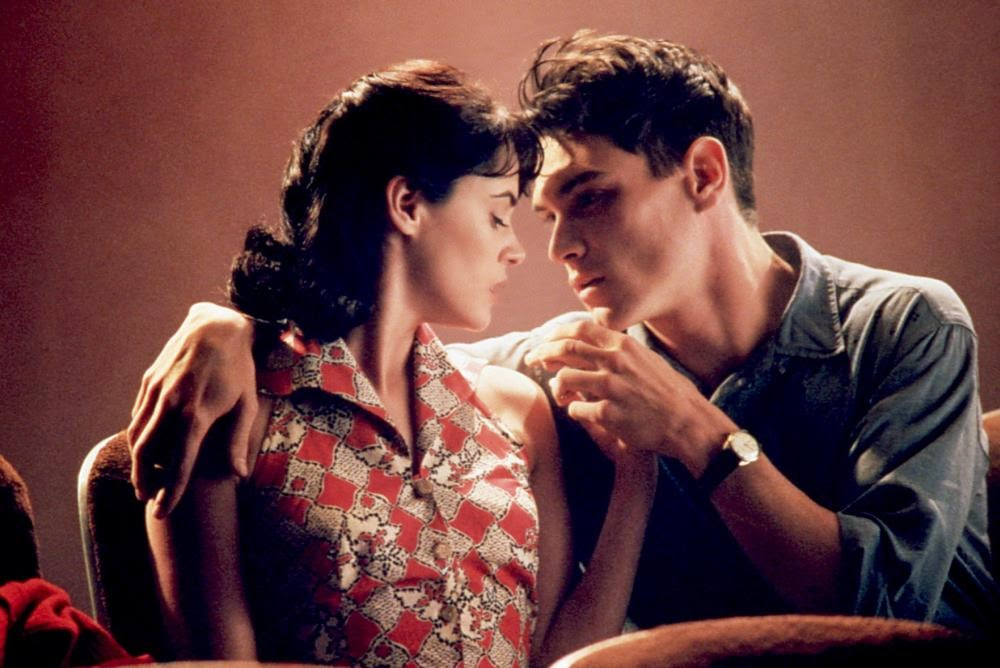
Production and Filmmaking
Directed by Pat O’Connor, known for Circle of Friends (1995), Inventing the Abbotts was produced by Ron Howard, Brian Grazer, and Janet Meyers under Imagine Entertainment and Fox 2000 Pictures. The screenplay by Ken Hixon adapts Sue Miller’s short story, expanding its scope to flesh out the Abbott sisters and add subplots, though some critics felt this diluted the original’s focus. The film was shot primarily in Northern California, with locations in Healdsburg, Petaluma, and Santa Rosa standing in for rural Illinois. The University of the Pacific in Stockton doubled for scenes set at the University of Pennsylvania.
The film’s production design, led by Gary Frutkoff, meticulously recreates the 1950s, from vintage cars and storefronts to period costumes by Aggie Guerard Rodgers. Cinematographer Kenneth MacMillan’s lush visuals evoke the era’s nostalgic glow, while Michael Kamen’s score enhances the film’s emotional depth. Despite its technical polish, some critics noted a sluggish pace and lack of dramatic weight, attributing this to O’Connor’s shift from the vibrant energy of Circle of Friends to a more languid, melancholic tone.
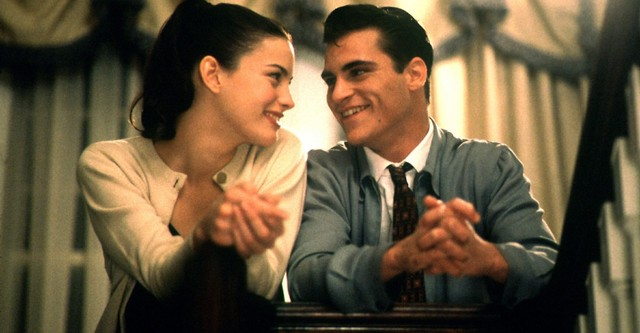
Reception and Legacy
Inventing the Abbotts received mixed reviews upon release, with a 37% approval rating on Rotten Tomatoes based on 195 reviews. Critics praised the cast’s performances and the film’s period authenticity but criticized its predictable plot and lack of emotional depth. Roger Ebert gave it two stars, calling it a “humorless, forgettable nostalgia piece” that pales in comparison to 1950s melodramas. The New York Times noted its “dewy glamour” but lamented its lack of “strong passions” compared to O’Connor’s earlier work. On the other hand, some viewers lauded its character-driven storytelling, with one IMDb reviewer calling it a “good little film” that got “lost in the shuffle.”
Box office performance was modest, with the film earning limited revenue due to its niche appeal and competition from bigger releases in 1997. However, it has gained a cult following over the years, particularly among fans of its cast, many of whom were on the cusp of stardom. The film’s exploration of universal themes—love, loss, and the struggle for identity—resonates with audiences, and its nostalgic aesthetic appeals to those drawn to period dramas. Social media posts, like one from a Reddit user in 2023, highlight its enduring charm, with viewers appreciating its “lovely acting” and ability to capture “the aches and pains of growing up.”
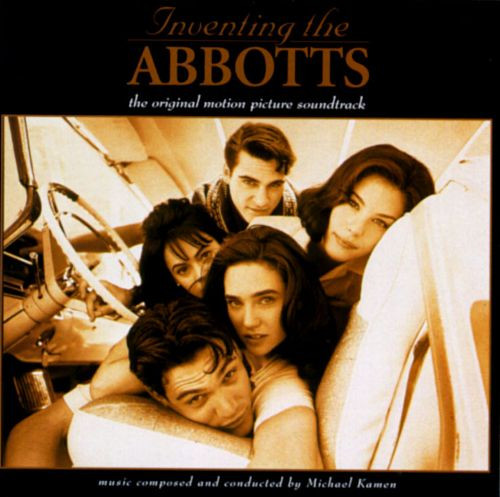
Where to Watch and Cultural Impact
Inventing the Abbotts is available for streaming or purchase on platforms like Amazon Prime Video, Apple TV, Fandango at Home, and YouTube. Its availability on digital platforms has helped it find a new audience, particularly among fans of 1990s cinema and coming-of-age stories. The film’s themes of class, romance, and family dynamics remain relevant, and its cast’s subsequent success—Phoenix’s Oscar win, Connelly’s Academy Award, and Tyler’s iconic roles—adds to its retrospective appeal.
Culturally, the film serves as a time capsule of both the 1950s it depicts and the 1990s it was made in, when ensemble dramas featuring young talent were a staple. Its influence can be seen in later coming-of-age films that explore class and romance, though it remains a quieter entry in the genre compared to blockbusters like Titanic (1997). Fans on platforms like Letterboxd praise its “beautiful cast” and memorable moments, such as Eleanor’s provocative scenes or Doug’s heartfelt gestures, like writing “I love you” on a steamed window.

Conclusion
Inventing the Abbotts may not have been a critical or commercial triumph in 1997, but its heartfelt performances, evocative 1950s setting, and exploration of love, envy, and redemption make it a compelling addition to the coming-of-age genre. With a powerhouse cast led by Joaquin Phoenix, Billy Crudup, Liv Tyler, and Jennifer Connelly, the film captures the messy, emotional journey of youth in a stratified society. While its script and pacing have drawn criticism, its nostalgic charm and character-driven storytelling have earned it a devoted following. For those seeking a poignant, beautifully crafted drama about the trials of growing up, Inventing the Abbotts is a hidden gem worth revisiting. Whether you’re drawn to its stellar cast, period aesthetic, or universal themes, this film offers a nostalgic escape into a time of innocence that was anything but.